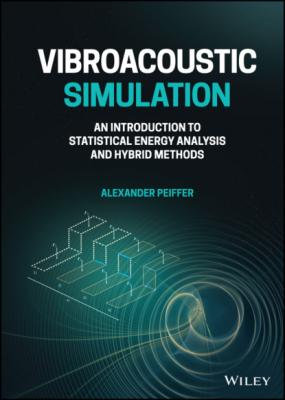Vibroacoustic Simulation. Alexander Peiffer
Чтение книги онлайн.
Читать онлайн книгу Vibroacoustic Simulation - Alexander Peiffer страница 45
 (2.144)
(2.144)
The integral is the Bessel function of first order
The results for some values of kR are shown in Figure 2.12 over the angular range of ±π/2. For a piston size small compared to the wavelength (kR≤1) the radiation pattern is similar to a point source. The smaller the wavelength gets in relation to the piston radius R the more a specific radiation pattern develops.
Figure 2.12 Angular distribution (radiation pattern) of the pressure field of the piston. Source: Alexander Peiffer.
2.7.3.1 Impedance Concept
The radiation impedance of the piston is calculated from the pressure averaged over the surface related to the piston velocity vz. As shown by Lerch and Landes (2012) the mechanical impedance of the piston due to radiation is given by
According to equation (2.141) assuming a constant velocity vz over the surface A the pressure is
Thus, we get the pressure at r from integrating the contribution from the rest of the piston in circles of radius s. The angle integration over φ0 runs from 0 to 2π. From every angle φ0 follows the integration limits smax of the second integral.
Using those limits gives
Inserting equation (2.149) into (2.146) leads to the expression
Figure 2.13 Surface integration over piston for radiation impedance. Source: Alexander Peiffer.
Running through quite a lot of algebraic modifications we get the expression for the impedance of a piston
or
H1(z) is the Hankel function of first order. In Figure 2.14 the real and imaginary parts of the acoustic radiation impedance are compared to those of the pulsating sphere. Both sources have a similar shape except some waviness for the piston resulting from interference effects from the integration over the piston surface. For large kR the impedance is real for both radiators and approaches the acoustic impedance of a plane wave z0=ρ0c0.
Figure 2.14 Acoustic radiation impedance of the piston. Source: Alexander Peiffer.
With Equation (2.87) the radiated power of a piston of source strength Q=πR2vz is
The main use of Equation (2.153) is that the required velocity to achieve (or prevent) a certain sound power can be calculated from it, for example if one must define the boundary condition for a radiating piston in simulation software and only the radiated power is known.
2.7.3.2 Inertia